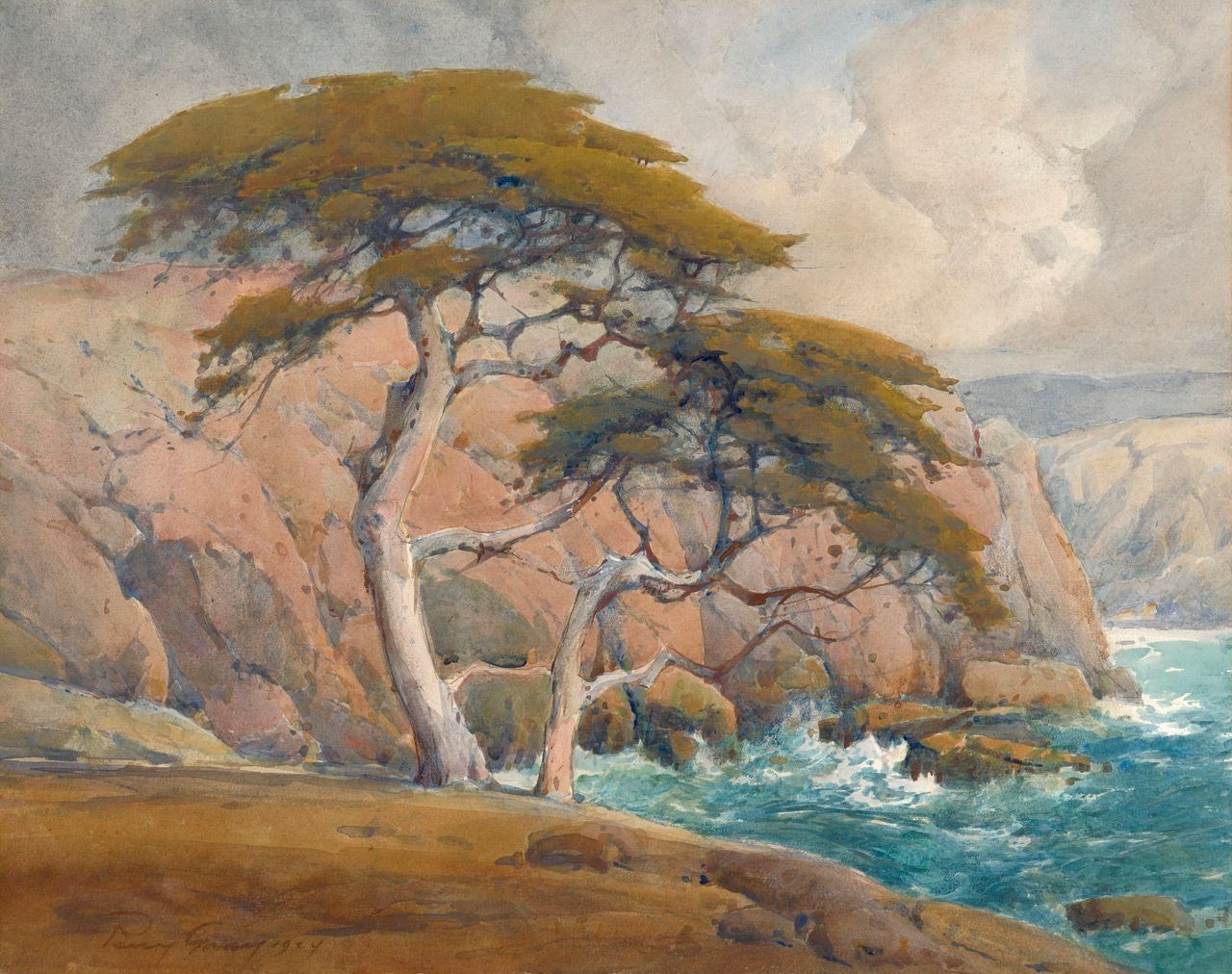Note
User Text: Like many of his early 20th-century contemporaries, Percy Gray revered nature and its positive influence, clung to a belief in the virtues of the past, and was intent on maintaining a simple life in the midst of a complex age. For Gray, these ideals were exemplified by the Native Americans he painted, the principles of the American Arts and Crafts movement that he contributed to, and by his own desire to preserve California’s natural beauty, both in reality and in his art.
Gray did not begin his career by painting the landscapes for which he later became known. After his initial study at the California School of Design in San Francisco, he put his skills to work as an illustrator. In 1895 he moved to New York and pursued the same line of work while continuing his art training at the Art Students League and with William Merritt Chase. He stayed in the city for the next eleven years.
In New York, Gray began a series of portraits depicting Native American leaders and chiefs. He eventually produced more than twenty such portraits, the majority of which were completed after he returned to California. Most were watercolors on paper; only one, which is in the Crocker collection and shown here, was on porcelain.
Gray began producing his mature work in the early 1910s when the Arts and Crafts movement was at its height. By this time, he had become almost exclusively a landscape painter. He painted most often in watercolor, but sometimes worked in oil, in this case on an unusual, trapezoidal canvas. He painted selectively, stating that it was hard to find trees—eucalyptus in particular—with enough poetry to translate into painting.1 Gray was careful about the times of day he chose to approach his subjects, and he combined the poetic realities he found with his own carefully structured compositions, evanescent approach to atmosphere, and expressive color.
1 E. Van Lier Ribbink, “Gray Walks Miles to Get Atmosphere,” San Francisco Examiner, 30 May 1920.
